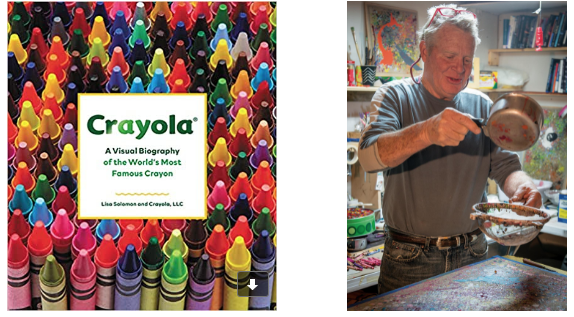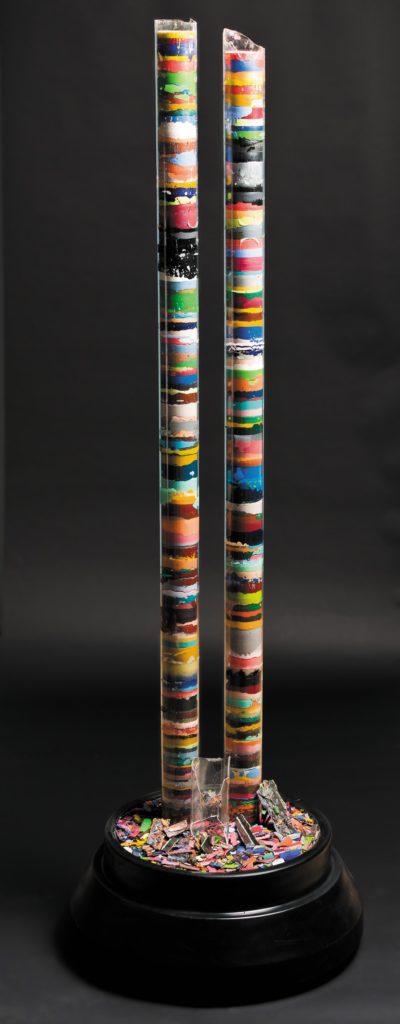In a recent issue of Smithsonian Magazine, artist Lisa Solomon discusses her book Crayola: A Visual Biography of the World’s Most Famous Crayon. In the book, she describes how she has incorporated Crayola crayons into her practice, and profiles five other artists doing the same. Among them, Douglas Mehrens, founder of the non-profit Encaustic Art Institute, Encaustic Arts online magazine, and the Museum of Encaustic Art. The Museum, previously located in Santa Fe, but now situated in its original location on Mehrens’ property in Cerrillos, New Mexico, holds more than 450 artworks in its permanent collection with 124 pieces on view in its current location (you can also view the full collection online here, and see the most recent edition of Encaustic Arts Magazine here).

Douglas Mehrens began his career as a wax artist over 40 years ago, drawn to Crayolas as a medium and to the vast array of its color palette. His art career has taken him to other wax mediums, but his love of Crayola has always stayed present. From Crayola wrapper sculptures to Crayola mobiles to color enhancements to other wax mediums – Crayola Crayon remains his main muse.

Mehrens, Solomon writes, “has used over 300,000 Crayola crayons in his work throughout the years. In the beginning, he would cut each wrapper off and save the wrappers to help him remember how many he was using. He has 156,000 of them. In 1992, when the 96 pack came out, he began saving the sharpeners instead. He has over 1,000 of them. When the 120 pack came out, he began saving the new tip sharpener, and he has over 400 of those!”
Mehrens says one of his most challenging works, which took more than a year to complete, required “pouring melted crayons into plastic tubes that transferred the wax into porcelain glass tubes—nine feet tall” in which “each layer of poured crayon represents a single floor of each of the 110 floors of the NYC World Trade Center Twin Towers. Where the planes hit the towers—it is represented in black, gray, and white crayons. Leftover dried crayon [bits] from the tubes were removed and placed at the base to represent the remains of destruction.”
Join us in celebrating Douglas Mehren’s long wax art career, and his dedication to bringing encaustic/wax art to the public at large.
Douglas Mehrens, Before, During, and After 9-11, Twin Towers, 2001, crayon and wax in 5-inch round glass tubes



